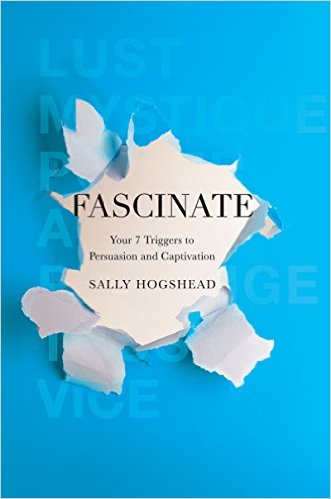Fascinate

As I mentioned in my last post about my experience with the National Speakers Association (NSA) that one of the speakers was Sally Hogshead. Sally convinced me, among other things, to buy her book Fascinate. But before I get to the book, I should explain how things worked at the conference and what caused me to buy – and read the book.
So Sally got a vignette. It was a small sliver of time between different parts of the program and the sliver of time introduced her fundamental beliefs around fascination and offered the attendees at the conference the ability to take a personality test for free. In a room full of speakers this was all we needed to spring into action. I literally took the test on the floor moments after Sally left the stage.
I found out the next day – in her regularly scheduled time — that I was far from being alone. It seems that numerous people had taken Sally up on her offer and she had a whole set of data from professional speakers. And in Sally’s words the results were “statistically significant” – that is to say the difference between all of the folks who had taken the tests and between all of the speakers who had taken the tests were very different. She didn’t provide the slides and I wasn’t quick enough to copy all the results but I can say that the distributions were not remotely close. My memory, which may be faulty, is that the results of the tests showed a strong bias towards prestige and power – and away from trust. Speaking as someone who scored with both mystique and rebellion – there were healthy doses of those characteristics as well, but I’m a bit ahead of myself. Let’s work backwards a bit.
The story gets a bit interesting. Sally Hogshead has a long history in marketing. That is a place she’s been quite successful. The book, Fascinate, was born out of her perspective on marketing. It was and is a book on marketing. However, somewhere along the line she realized that the core insight she had into humans was more valuable when applied to individuals than applied to marketing – or at least as interesting as the implication in marketing.
She identified seven triggers – seven ways that we express our ability to fascinate. They are: (The descriptions are mine)
- Passion – Creating a craving in another person.
- Trust – Fascination through comfort. You’re reliable and dependable which helps them to be at ease.
- Mystique – You create curiosity about you and your message.
- Prestige – You are a person to envy. You make other covet what you have and who you are.
- Power – You encourage others to follow you; to allow you to control them.
- Alarm – This is the siren of urgency. You trigger folks to act quickly.
- Rebellion – You encourage folks to view the world differently; to rebel from the status quo.
Before I leave this I need to do a bit of reconciliation. The book speaks of passion as lust and of rebellion as vice. You can see Sally explain the differences here.
Basically after the test you’ll find out which of these techniques you use most often. There will be a primary trigger and a secondary trigger. You’ll also get a response with your dormant trigger – which is basically the approach you use least often. (In my case power.) I already mentioned that I’m mystique and rebellion – those intersect into an archetype. The 7×7 matrix leads to 49 different archetypes which you can read about on the HowToFacinate.com site. But I should get back to the book.
At its core the book is a marketing book. It exposes a way to look at marketing a product, a service, or a brand. There are components of this puzzle I’ve seen shadows of before in Demand. Fascinate offers a different approach focused around building your own formula with the seven triggers. While there’s scant information on how to precisely mix these triggers to create your own formula, the fact that there is greater definition of the triggers and how they work means that you’ll be able – if you want – to build your own map for how to put the pieces together.
I believe that the framework here is already been more helpful in my considerations for how I’m going to brand and market. Admittedly I’m struggling with making the content work for me – but I believe that has more to do with my struggles with marketing in general than the content of the book. If you’re trying to figure out “what you want to be when you grow up” – or who – it’s a good book to learn more about the model – and yourself. Pick up the book and Fascinate yourself.
